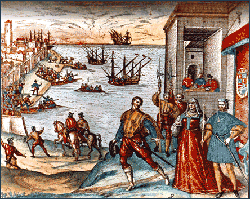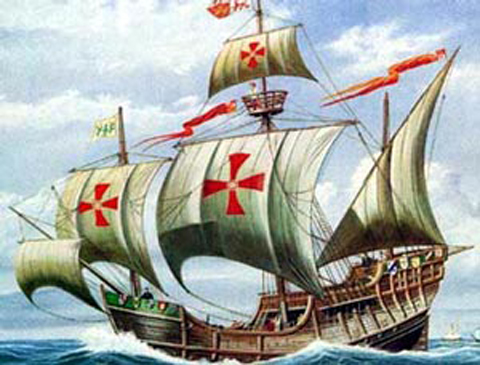Fifthteenth Century
The 15th Century and Renaissance (1450-1500)
In the history of project management the period was dominated by the Renaissance. The closure of the trade routes east by the fall of Constantinople (1453) spurs the age of exploration driven by Spain, Portugal. From a PM perspective the development of new tools and technologies (namely the Astrolabe, the Caravel, and advances in cartography) facilitate these journeys of exploration. Large projects are sponsored by the crown and church.
|
The age of exploration was driven by principally the Portuguese who were sailing further south down the coast of Africa. They were soon followed by the Spanish when they saw the riches coming back. However, there was great fear in undertaking these journeys, and it took the Portuguese 16 attempts to cross the equator south because sightings of the North star disappeared and crew feared sailing on. These journeys of exploration were complex projects in their own right.
|
 |
|
Christopher Columbus planned his exploration for many years, 17 years in all, and had to wait for the right time to find the support (people), the funding, and the required advances in marine technology which he mastered.The project charter was clear Columbus’s principal objective was to reach the east by going west, or the “Enterprise of the Indies.”
He had to bide his time and wait for the right opportunity and be very persistent, and resourceful, and to change allegiances to find the right sponsor/ backer. From a project perspective Columbus had to very much initiate the project, and drive the project forward. Once he got the support the biggest challenges were in managing the crew who were fearful of the voyage. They were motivated by riches and glory.
Columbus needed all the skills of a modern project manager. He had to justify the project to his royal sponsors. He had to carefully manage the scope of the project which changed dramatically when one of the ships was lost. The return voyage was made much more difficult by this. He had to manage the timeline as the ships could only carry several months of adequate supplies of food and water. He needed to manage a significant budget but at great risk to the investors, and he struggled for a long time to get royal patronage. It was the only way to get enough ships, sailors and secure resources, and cooperation from various organizations.
He also had great difficulty in acquiring a crew and developing them into an effective team which proved a challenge because of their fears and expectations. He had to sell the idea and get a broad interest from key stakeholders, and have the project adopted by a crew. He had to promise glory and paint a vision. He needed to manage the risk as he did not have an accurate maps or knowing the distance to the Indies (based on an inaccurate estimate of the Earth’s diameter).
The voyage proved the viability of Trans-Atlantic travel, and the trade winds. It was inspirational to other European explorers, and spawned the voyages by Cabot, and Magellan. |
|


